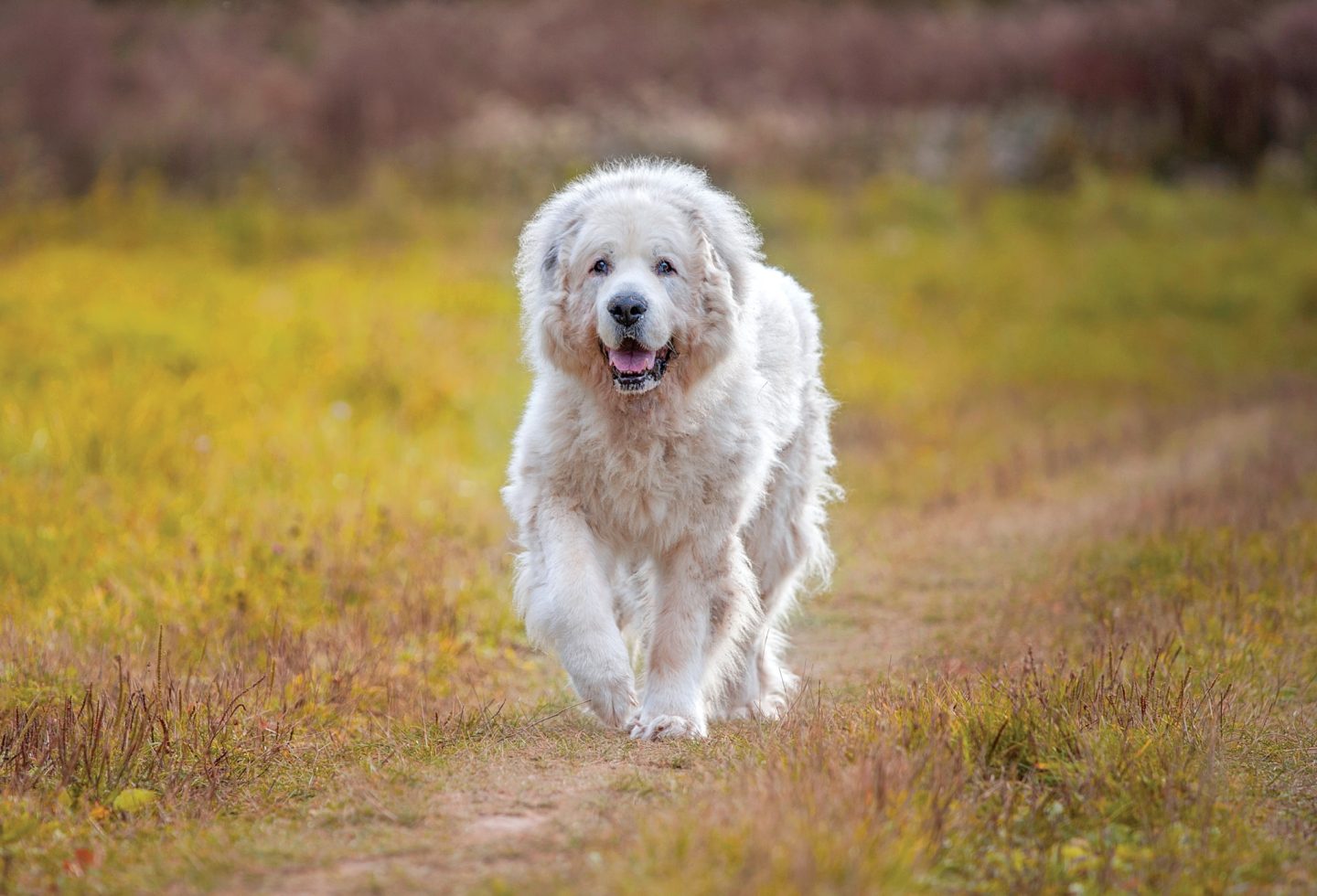
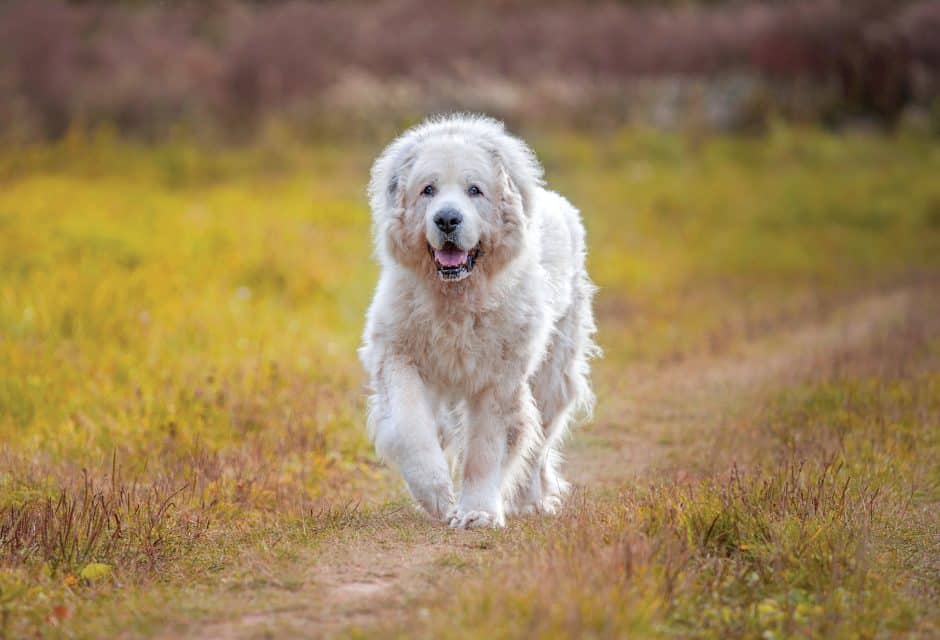
The Great Pyrenees
Big, beautiful, and brave—is this striking gentle giant the breed for you?

With that glorious white coat and immense size, the Great Pyrenees is a real head-turner. Though intimidating from afar, up close you’ll quickly realize this is a gentle giant. At least, gentle to those they care for. Great Pyrenees are flock guardians hard-wired to care for their charges and fearlessly protect them at any cost. Is the Great Pyrenees a match for you? Let’s find out!
Early History
The Great Pyrenees is an ancient breed. Tracing their lineage is possible, but only to a point. This is one of several breeds descended from the large and powerful dogs in Asia Minor used for hunting, guarding, and working as far back as 11,000 years ago.
These Mastiff-type dogs migrated to many locations over the centuries. Once isolated in new locations, they mated with dogs that came with them, as well as those from their new region. Over the years, several breeds emerged, including the Kuvasz, the Komondor, and others—including the Great Pyrenees, who’s named for the region where they were developed. The Pyrenees Mountains serve as a natural border between France and Spain, and evidence suggests that the Pyr arrived there as far back as 3000BC.

TheLaceratingLynx/Shutterstock
A Vital Role
The Pyr is an immense dog that’s been used as a flock guardian for centuries. Their role was to guard livestock and protect their charges from threats, including predators like wolves and bears, along with human poachers.
Their white coat is a trademark and was undoubtedly developed with intention. On the snow-covered Pyrenean terrain, white fur would have provided natural camouflage—an edge over predators.
As a livestock guardian, the breed is nothing short of extraordinary. They’re chill and laid back around farms, fields, and home but always vigilant—and always working. Shepherds allowed their Pyr’s to patrol the territory independently and trusted them to known who and what was a friend—or a foe.
This breed might seem slow and sluggish, often walking slowly or lying about as they survey their flock, but the Pyr is renowned for their ability to identify a threat and spring into action with remarkable speed and ferocity. Exactly how they’re able to make split-second decisions about intruders with such uncanny accuracy is something that can’t be fully explained. It’s just what the Great Pyrenees does—and they do it perfectly.
Fun Facts
+ Pyrs have two dew claws on each of their back legs. Other breeds with this uncommon trait include the St. Bernard, the Briard, and the Norwegian Lundehund.
+ Pyrs were introduced into the St. Bernard bloodline and are credited for the St. Bernard’s thick coat and calm temperament.
+ Some of the famous people who’ve owned Pyrs include Queen Victoria, Thomas Jefferson, and Elvis Presley.
+ Pyrenees remains have been identified in fossil deposits from the bronze age of 1800-1000.
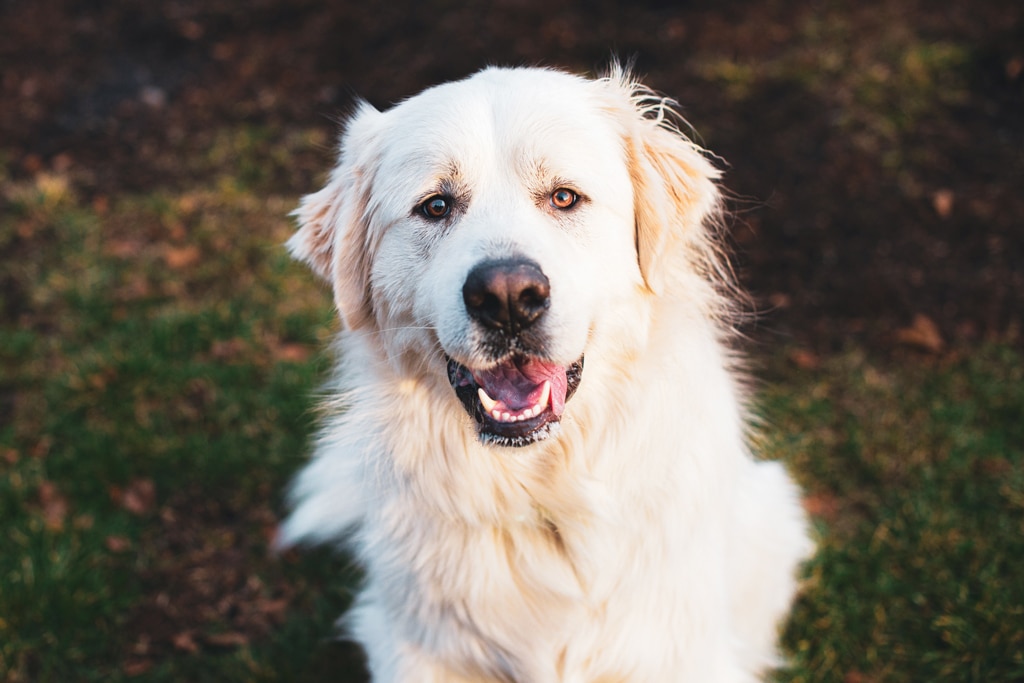
Beatrice Foord St Laurent/Shutterstock
Continued Development
By 18th century BC, the Great Pyrenees was a widely used flock guardian in their native region. Efforts then, and continuing into the 20th century, focused on refining the breed’s type and temperament. Always, the practical needs of shepherds and farmers for a guardian were prioritized, but so was the desire for a dog with an even-tempered, calm personality.
Big, beautiful, and brave—it’s no surprise that this dog caught the interest of French royals and aristocrats. Estates sought out this breed, both for their guarding skills, as well as the sheer sight of them. This is a dog with a very regal presence, and their ties to the French landscape were another reason the nobles desired them. Fortunately, while they graced many a royal estate, the Pyr remained a breed used extensively by farmers and shepherds.
Coming to America
Great Pyrenees were exported to various locations. One of their earliest destinations was Newfoundland, where they caught the eye of Newfoundland dog fanciers. Some Pyrs were crossed with the jet-black Newfoundlands, leading to the creation of the Landseer Newfoundland—a black and white version of the original, named after the artist who captured the Newf’s appearance and heroic capabilities in his paintings.
One of the first—if not the very first—Pyr’s in the United States was brought by the Marquis de Lafayette.
Enduring through Adversity
Like so many breeds, the World Wars took their toll on the Great Pyrenees. The Pyrenean mountains were a route well-traveled by members of the resistance heading to Spain, where they hoped to find refuge. Throughout France, resources were strained to the breaking point. Shepherds and farmers struggled to feed and care for their dogs. Additionally, many Pyr’s were used during the wars to carry supplies and ammunition. Loss of canine life was significant, and the breed was at risk.
The fact that many Great Pyrenees had already been exported to North America and elsewhere may have saved the breed. After each war, dedicated breeders worked for decades, painstakingly bringing the breed back from the brink of obscurity.
Get to Know the Great Pyrenees
- Immense and very powerful
- Needs a job if not guarding a flock
- Gentle and patient with kids and smaller animals
- Loyal and fiercely protective of their family
- A territorial breed who will wander, if given the chance
- Independent and strong-willed
- Challenging to train
- Many consider this a nocturnal dog
A Standard Evolves
In 1885, Pyrenean Mountain Dogs were recognized by The Kennel Club. By this time, Pyr’s were being exported to North America, but it wasn’t until 1933 that the American Kennel Club recognized the breed.
According to the AKC standard, the Great Pyrenees stands between 27 to 32 inches at the shoulder for males, and 25 to 29 for females. The body is primarily white (or closer to cream, in some). Gray, tan, or other coloured markings are often found on their ears, head, tail, and body. The breed commonly weighs well over 100 pounds; the standard sets a minimum of 85 pounds for females and 100 for males.
Around the Home
What’s the Great Pyrenees like to live with? Well, they can make a wonderful family companion, but must be understood and given what they need to thrive. This working dog’s guarding and protecting instincts run deep, and that always must be considered.
The Pyr is hard-wired to be kind and patient, but their instinct to guard and protect their family remains strong. They are naturally suspicious of strangers. Pyr’s are wonderful with children and smaller pets, including cats—especially if they’ve known them from day one.
Territorial by nature, this breed loves to spend time outdoors where they can roam and keep watch. A fenced-in yard is an absolute must, and the higher the better. An apartment dog this is not.
Great Pyrenees are pretty chill around the house during the day, but during the night, they’re vigilant—and vocal. Developed to fend off threats to livestock, nighttime would have been an active time for predation. Because they’re extra vigilant at night, that means they’ll be vocal. Evenings are meant for barking, by Great Pyrenees logic. Rest assured their deep, powerful barks will keep many predators away.
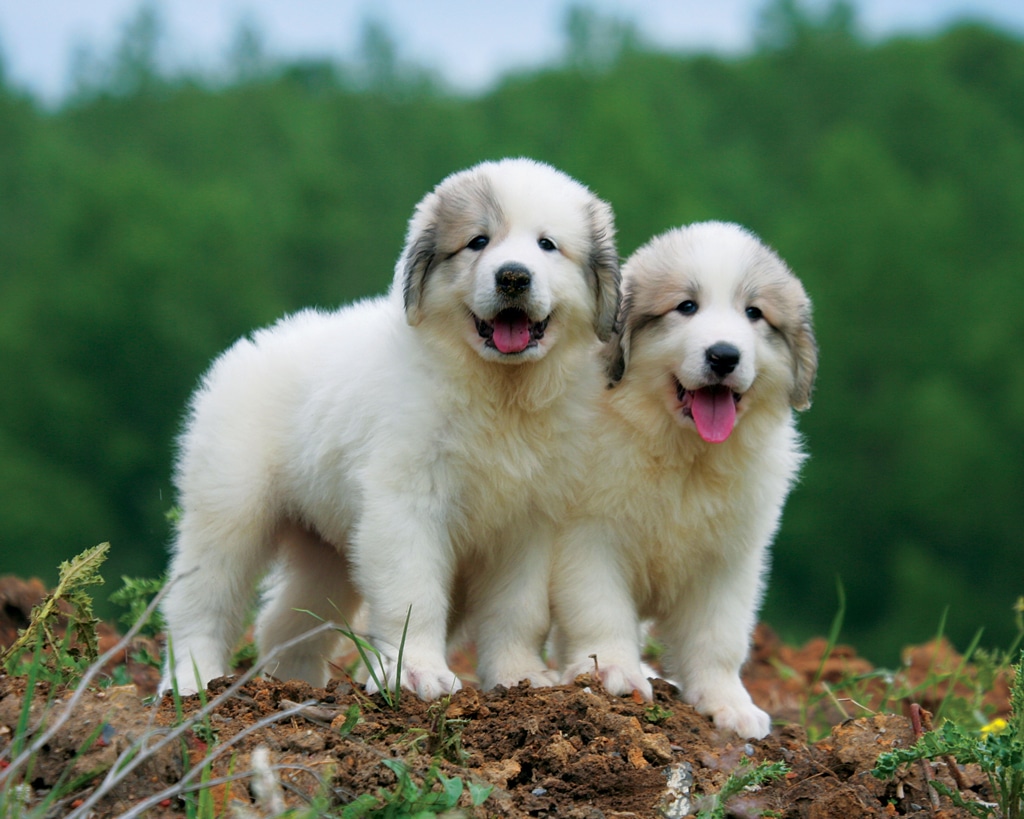
Dogs/Adobe Stock
Socializing and Training
Territorial and protective by nature, the Pyr needs to be socialized and trained from a very early age. They’re intelligent but have a mind of their own, so training may not be the easiest of tasks, but it will be a rewarding one.
This willful breed can get easily bored during training—most commonly conveyed by moving at a snail’s pace with a decidedly-unimpressed demeanor! You’ll need to get creative to find ways to make training fun for this breed. Most agree that short sessions—and lots of them—focused on positive reinforcement are best.
Profile: The Great Pyrenees
Size: Giant.
Tall, muscular, and extremely powerful. This breed can weigh 85 to over 160 pounds. Height ranges from 25 to 32 inches at the withers.
Activity Level: 2/5
A daily 30-minute walk on-leash will keep the Pyr fit. They’ll thrive having some territory to patrol.
Grooming: 3/5
Average. Regular brushing is required to keep the thick, double-coat free of mats.
Heritage: An ancient breed developed in the Pyrenean mountains to help shepherds and farmers protect their flocks.
For more information on Affenpinscher rescue in the U.S., visit greatpyrenees.club/rescue-information. In Canada, visit pyrcanada.com.
Activities
The Great Pyrenees is a dog that needs a job. No, you don’t have to move to the countryside and give your Pyr a flock to watch over, but if this breed is to thrive, you’ll need to find ways to help them satisfy their need to work.
Great Pyrenees love to hike and are wonderful companions for those who like to be outdoors. On walks or hikes, put a backpack on them. Or, around your yard or in sporting activities, let your Pyr do some carting. They’re naturally suited to carry things, and doing so will give them a sense of purpose.
Another purpose can be found in therapy work. The Pyr thrives in this role. This is a gentle and patient breed. Due to their size, they’re able to meet those in beds or wheelchairs at eye level and come in close for some affection.
Other Considerations
This isn’t a breed with complex grooming requirements, but routine brushing is important. Otherwise, that thick coat can become full of mats.
Health-wise, like all purebred dogs, Great Pyrenees do have some genetic conditions to be aware of, but overall, this is a hearty breed.
In some ways, the Great Pyrenees is a walking contradiction: calm and loving in the home, but hard-working and sometimes ferocious in the field. This is, quite simply, a breed that is not suited for most dog lovers. But for those with the right environment and the time and attention the Pyr needs, the rewards are profound. Unwaveringly devoted to you, the Great Pyrenees will remain by your side through thick and thin. They’ll literally lay their life down for you, if required. Love… love is not a big enough word.
If you like the Great Pyrenees, you might also consider the…
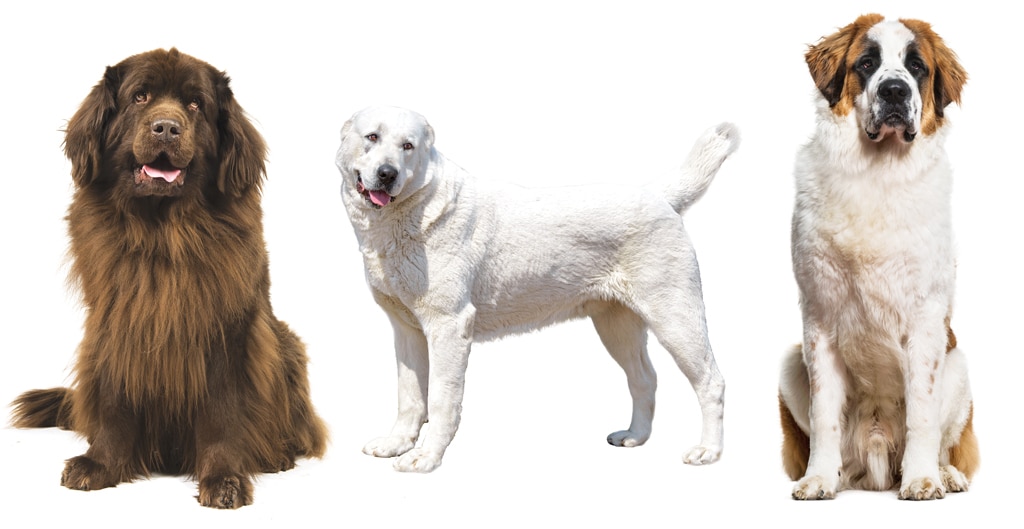
Photos from L to R: MirasWonderland/Bigstock, Volofin/Bigstock, Life on White/Bigstock
Newfoundland Akbash Dog St. Bernard
» Read Your Breed For more breed profiles, go to moderndogmagazine.com/breeds
This article originally appeared in the award-winning Modern Dog magazine. Subscribe today!
Join the newsletter and never miss out on dog content again!
"*" indicates required fields
By clicking the arrow, you agree to our web Terms of Use and Privacy & Cookie Policy. Easy unsubscribe links are provided in every email.